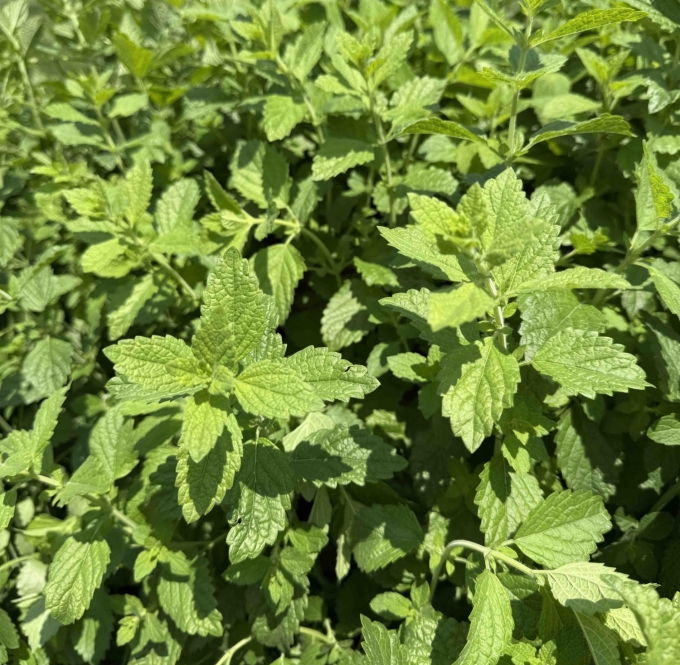Common Name: Lemon Balm
Family: Lamiaceae
Plant Type: Herbaceous Perennial
Native Range: Southern Europe and western Asia; widely cultivated and naturalized in North America, including Nebraska
Hardiness Zones: 4–9
Height: 1.5 to 2.5 feet
Spread: 2.0 to 3.0 feet (can spread aggressively)
Bloom Time: Summer (July–August in Nebraska)
Bloom Description: Small, inconspicuous whitish or pale yellow flowers in leaf axils
Sun Exposure: Full sun to part shade
Water Needs: Medium
Soil Preference: Well-drained, moderately fertile soils; tolerates a range of soils
Maintenance Level: Medium (can spread vigorously if not managed)
Suggested Use: Herb gardens, borders, pollinator gardens, containers
Attracts: Bees, butterflies, beneficial insects
Tolerates: Drought (once established), poor soils, deer, light shade
Notable Features: Strong lemon-scented foliage, edible leaves, medicinal and culinary uses
Nebraska Growing Notes:
Lemon Balm is a hardy, adaptable perennial herb that grows well in Nebraska gardens. It prefers full sun to part shade and moderately moist, well-drained soils, but tolerates periods of heat and drought once established.
Its lush green foliage provides excellent texture and fragrance in the garden. However, Lemon Balm is vigorous and can spread rapidly by seed and underground stems, so it may require containment or regular cutting back to prevent it from becoming weedy.
Regular harvesting of the leaves helps keep the plant compact and encourages fresh growth.
Landscape Use:
Excellent in herb gardens, cottage gardens, pollinator beds, and containers. Its fragrant leaves make it a favorite along pathways or near seating areas. Combines well with other herbs like mint, thyme, sage, and lavender, or with ornamental perennials.
Caution:
Non-toxic and safe for humans, pets, and wildlife. Can become invasive if allowed to self-seed freely, consider deadheading flowers and harvesting regularly. In crowded or damp conditions, may develop powdery mildew.
Garden Locations:
Sources:

